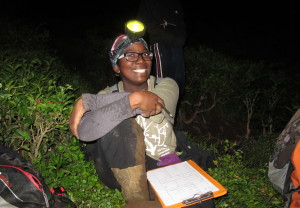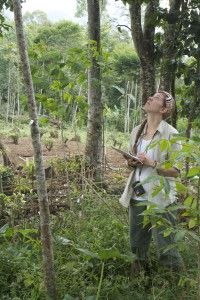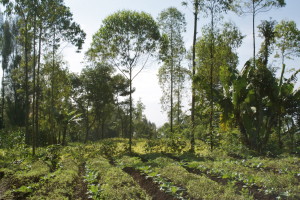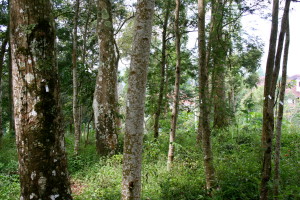As the new research coordinator at LFP, I have been charged with the task of bringing LFP’s research projects into the future and increasing our data output and impact. A change in management is a difficult time for any project. Before one can move forward with new research, one must become familiar with the research previously and currently conducted at a field site.
The diversity of tasks carried out by LFP made this a difficult yet rewarding task for me. Our research spans conservation education, behavioural research, sleeping site analysis, small carnivore research, camera trapping, and market surveys. Despite our already wide array of research interests, I plan to expand the research scope of LFP. Unfortunately none of our new research projects are in full swing yet but I can say something about our plans and early stage developments.

Two of our current research focuses are based on two of our PhD students, Katie Reinhardt and Stephanie Poindexter. Stephanie is interested in the cognitive ability of lorises and whether or not they use large-scaled spatial memory and directed travel to navigate their home ranges. This involves collecting as much GPS data as possible on the lorises’ movements. Stephanie plans to bolster her dataset with object permanence testing on captive individuals. Object permanence is the term used to describe the awareness that objects continue to exist even when they are no longer visible. In its most simple form, this level of cognitive ability can be investigated by showing the lorises desirable (food) items and then hiding them from view by covering them over with something. If the lorises are observed to remove the cover and take the item rather than assume that the item has vanished, this would provide strong evidence for an awareness of object permanence in lorises. The ability to understand object permanence may help the lorises locate food and other resources and may help us explain how lorises navigate their environment.

Katie’s PhD is just as fascinating. She is interested in slow loris energetics (i.e. how they use and regulate their energy) in a changing climate. Katie’s research is especially relevant now because of the growing threat of global climate change to our planet’s wildlife and because many animals, including our lorises, are being forced up to higher and higher altitudes as human settlements and agriculture encroach further upland. Climate varies with altitude and may be forcing our lorises to behave in new ways to survive. Katie’s research is key to understanding this type of adaptation. Katie’s research will also examine the potential role of lorises as plant pollinators. We are currently setting up our plots in each of our lorises’ home ranges. From these plots, we will collect data on vegetation, phenology (phenology is the study of periodic biological phenomena in relation to climatic conditions e.g. flowering and fruiting seasons), and climatic variables such as temperature and humidity. These data, combined with behavioural data should give us an insight into the effect of climate of loris behaviour.

As the single biggest threat to lorises at our field site in West Java is habitat destruction and disturbance due to farming practices, a big focus for me this will be the introduction of agroforestry practices to the area. Agroforestry is the practice of integrating trees into agricultural systems. If done in a systematic and carefully considered way, trees on farms can have huge benefits. Planting trees on farmland can lead to carbon sequestration (which is key in tackling greenhouse gas driven climate change), better water and nutrient cycling (leading to higher crop yields for a reduced input), reduced soil erosion, natural disaster mitigation (by reducing flooding and landslides through soil stabilisation), increased animal biodiversity (through increased plant species diversity and increased habitat area), habitat restoration, economic benefits, and many other things besides. In systems like these, trees provide many services to both humans and wildlife. This project will be a long-term endeavour and will require the construction of a tree nursery and much trial and error with regards to tree species and crop combinations but we hope that our lorises and the other wildlife in the area will feel the positive effects of this in time.

Other studies that are in the pipeline for this year are loris vocalisation research, baseline biodiversity surveys, and small carnivore behavioural observations. Already this year LFP team members have contributed to the publication of around 15 scientific articles on topics as varied as loris evolutionary history, loris venom function, the illegal wildlife trade, loris distribution, loris conservation, and loris captive welfare. I hope that the rest of the year will be even more fruitful. Watch this space.
– Robert O’Hagan, LFP Research Station Coordinator
